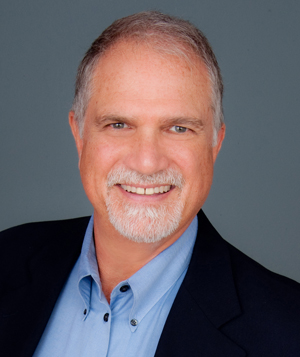Nonprofit mobile home builder hopes to be a national model
23 July 2022
NOTE from Councilor Groves: This past winter during a visit and tour of the Safe Sleep Site located at 410 Garfield Street, Terry McDonald of St. Vincent de Paul shared with me his vision for establishing a low income housing manufacturing facility at 888 Garfield. Since that time Terry has secured the property and $15 million in State funding to get this project off the ground.
The operation will create about 100 jobs and by next summer will begin producing high quality, energy efficient, low cost manufactured housing for low-income residents. This is something that Eugene, Lane County and the State of Oregon desperately needs. As with so many things that Terry does, he has developed a strategy for helping marginalized people, providing a roof over their heads and giving them a much needed leg-up in life.When speaking with Terry on that cold winter day, I was impressed not only by his passion, but his grasp of the need, the market and his ability to articulate a sound business strategy. Terry had a vision and a plan.
We are lucky to have Terry McDonald in our midst and I look forward to watching this production facility develop and start churning out affordable housing. This will provide yet another link in the chain to help our community with a group that needs hope and is struggling with every day life.
Nonprofit mobile home builder hopes to be a national model
Tatiana Parafiniuk-Talesnick Eugene Register-Guard USA TODAY NETWORK
In about a year, a new Eugene nonprofit hopes to breathe new life into a former steel plant by bringing in more than 100 workers to make mobile homes for low-income families.
Housing Options Production Enterprise Community Corporation (HOPE) has big plans.
It will be the manufacturer and work alongside St. Vincent de Paul of Lane County, which will operate as the seller. At full capacity, the mobile-home production line will be able to finish two to four homes every work day, staff said.They believe it’s the only non-profit manufacturing facility for mobile homes in the nation.
HOPE was established to respond to the housing shortage for low-income Oregonians, especially the thousands whose homes burned in the 2020 wildfires.
It’s a shortage staff said couldn’t be met by the industry, which was already ill-equipped to serve low-income Oregonians unable to afford or access replacements for aging modular homes past the end of their useful life.
St. Vincent de Paul of Lane County executive director Terry McDonald is ambitious. He is serving as HOPE’s president as well and wants the organization to manufacture affordable, energy- efficient, fire-resilient, high-quality homes while creating good local jobs for the team that makes them.
“The goal is to hit a home run,” Mc-Donald said at a news event in the nearly- empty plant Friday. “The idea is to keep the cost of these units down by vertically integrating the entire process from beginning to end so that we can make it the most affordable, durable, energy-efficient product that we’ve ever seen in the state.”
He hopes to work with training programs within the region to give students such as those in high school career and technical education programs and at Lane Community College an opportunity to learn in a manufacturing setting and potentially begin their career.
St. Vincent de Paul will also look to its own programs for labor, such as Supportive Services for Veteran Families, which works to help to move participants from poverty and homelessness to stability and self-sufficiency.
86,000 homes too few
The project was launched with the help of $15 million for the Oregon Legislature.
Oregon is 86,000 units short of the affordable units residents need, the nonprofit housing policy advocacy group Up for Growth estimated in its 2022 report on Housing Underproduction in the U.S.
State Rep. Pam Marsh, D-Ashland, said the shortage is closer to 110,000 to 140,0000.
She secured the state’s funding for this endeavor and introduced House Bill 4064, which prohibits local governments from banning manufactured structures in residential areas.
Her district lost 2,500 homes, mostlymanufactured and RVs, during 2020’s Almeda Fire. Few of those homes have been replaced.
“It’s really hard to come up with manufactured homes,” Marsh said. “So, what do we do about this? We do what Terry McDonald envisioned — we start producing more manufactured homes.”
HOPE’s first priority
McDonald said the first priority for HOPE is to start producing two traditional mobile-home floorplans most in need by low-income buyers: a 2-bed/1-bath, about 800-square-foot singlewide; and a 3-bed/2-bath, 1,300square-foot doublewide.
The homes will go to organizations and people who buy them all around the state.
Engineering and early phases of site work have begun at the West Eugene plant, located at 888 Garfield. Construction is slated to begin Dec. 1 and production will start July 1.
Before the start of manufacturing, St. Vincent de Paul will open an “as-is” thrift store and donation center on the site this fall. It will occupy about 15,000 square feet of additional space in front of the future HOPE production facility.
If the project goes well, the plant will continue to make homes for years to come and serve as a model for the rest of the country.
Eventually, HOPE hopes to then move on to its next mission: multi-bedroom, multi-bath “quint” or “quad” units to serve programs providing transitional housing for unsheltered people across the state — similar to the five-unit modular apartment St. Vincent de Paul recently built to house a women’s residential sober-living program, The Phoenix House.
“I think the need is pretty much eternal,” McDonald said. “This type of product is needed everywhere.”
Contact reporter Tatiana Parafiniuk-Talesnick at Tatiana@registerguard.com or 541-521-7512, and follow her on Twitter @TatianaSophiaPT.
